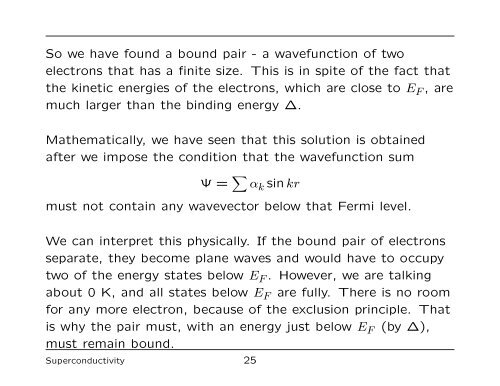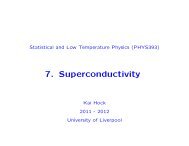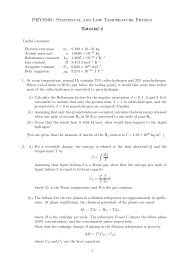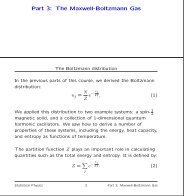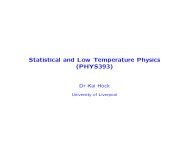The Nature of the Cooper Pair - University of Liverpool
The Nature of the Cooper Pair - University of Liverpool
The Nature of the Cooper Pair - University of Liverpool
Create successful ePaper yourself
Turn your PDF publications into a flip-book with our unique Google optimized e-Paper software.
So we have found a bound pair - a wavefunction <strong>of</strong> two<br />
electrons that has a finite size. This is in spite <strong>of</strong> <strong>the</strong> fact that<br />
<strong>the</strong> kinetic energies <strong>of</strong> <strong>the</strong> electrons, which are close to E F , are<br />
much larger than <strong>the</strong> binding energy ∆.<br />
Ma<strong>the</strong>matically, we have seen that this solution is obtained<br />
after we impose <strong>the</strong> condition that <strong>the</strong> wavefunction sum<br />
Ψ = � α k sin kr<br />
must not contain any wavevector below that Fermi level.<br />
We can interpret this physically. If <strong>the</strong> bound pair <strong>of</strong> electrons<br />
separate, <strong>the</strong>y become plane waves and would have to occupy<br />
two <strong>of</strong> <strong>the</strong> energy states below E F . However, we are talking<br />
about 0 K, and all states below E F are fully. <strong>The</strong>re is no room<br />
for any more electron, because <strong>of</strong> <strong>the</strong> exclusion principle. That<br />
is why <strong>the</strong> pair must, with an energy just below E F (by ∆),<br />
must remain bound.<br />
Superconductivity 25


